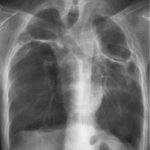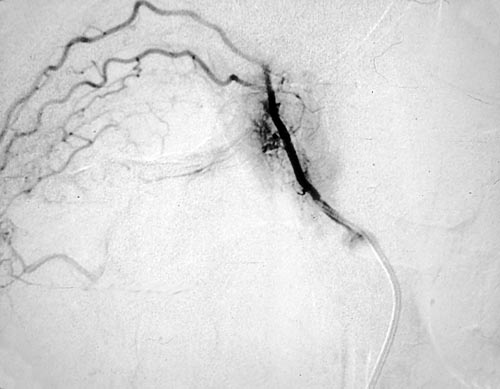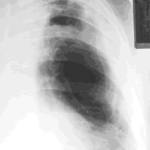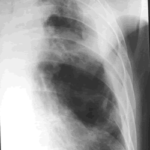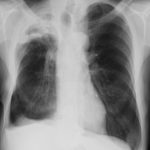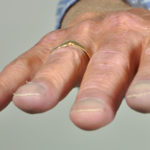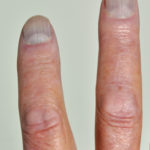Date: 26 November 2013
Copyright: n/a
Notes:
An angiogram is used to check the structure of blood vessels and detect narrowing, blockages or aneurysms that could affect organs such as the heart, brain or kidneys. During an angiogram, the patient is injected with a dye and then imaged with an X-ray or a CT scan. It usually takes 0.5 – 2 hours and doesn’t require general anaesthetic.
This angiogram shows the right posterior intercostal (between-the-ribs) artery. The dark dye shows that the artery is dilated (widened).
Read more about angiograms at NHS Choices
Images library
-
Title
Legend
-
Image A
CT Scan 30/3/99
Showing extreme pleural thickening and 2 small cavities at apex of left lung.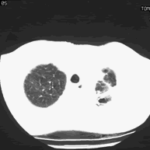
-
A 43 year old with smoking related emphysema was admitted to hospital with two separate episodes of haemoptysis. He had been in good health up to 1989, when he was diagnosed as having bilateral pulmonary tuberculosis. At that time a CT scan revealed a cavity in the left upper lobe (20.8cm2) with adjacent confluent infiltrates and pleural thickening. On bronchoscopic examination no abnormalities were noted and endobronchial biopsies did not reveal hyphae.
Over the next 4 years his condition deteriorated and a CT scan showed the left upper lobe cavity had increased to 40cm2. Itraconazole 400mg daily was prescribed. There was some clinical improvement on itraconazole but patient eventually deteriorated with breathlessness and with significant weight loss.
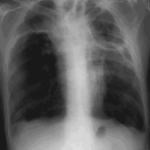 ,
, 